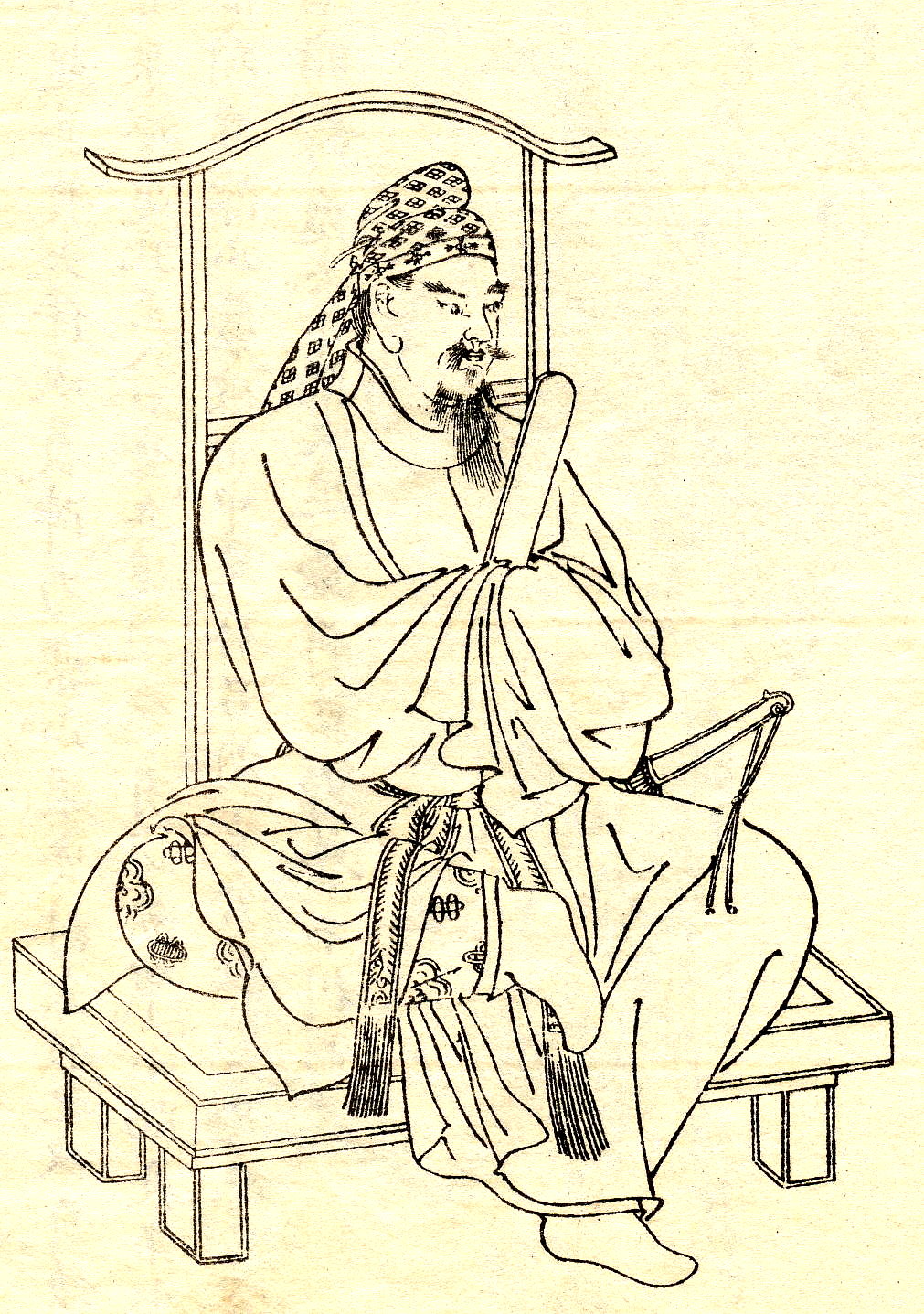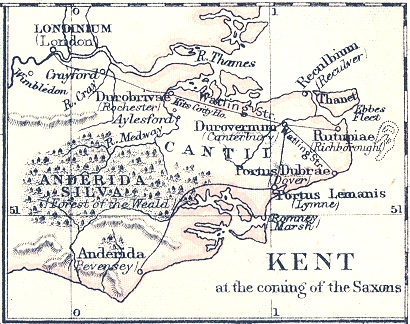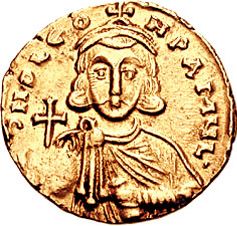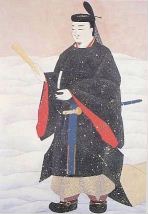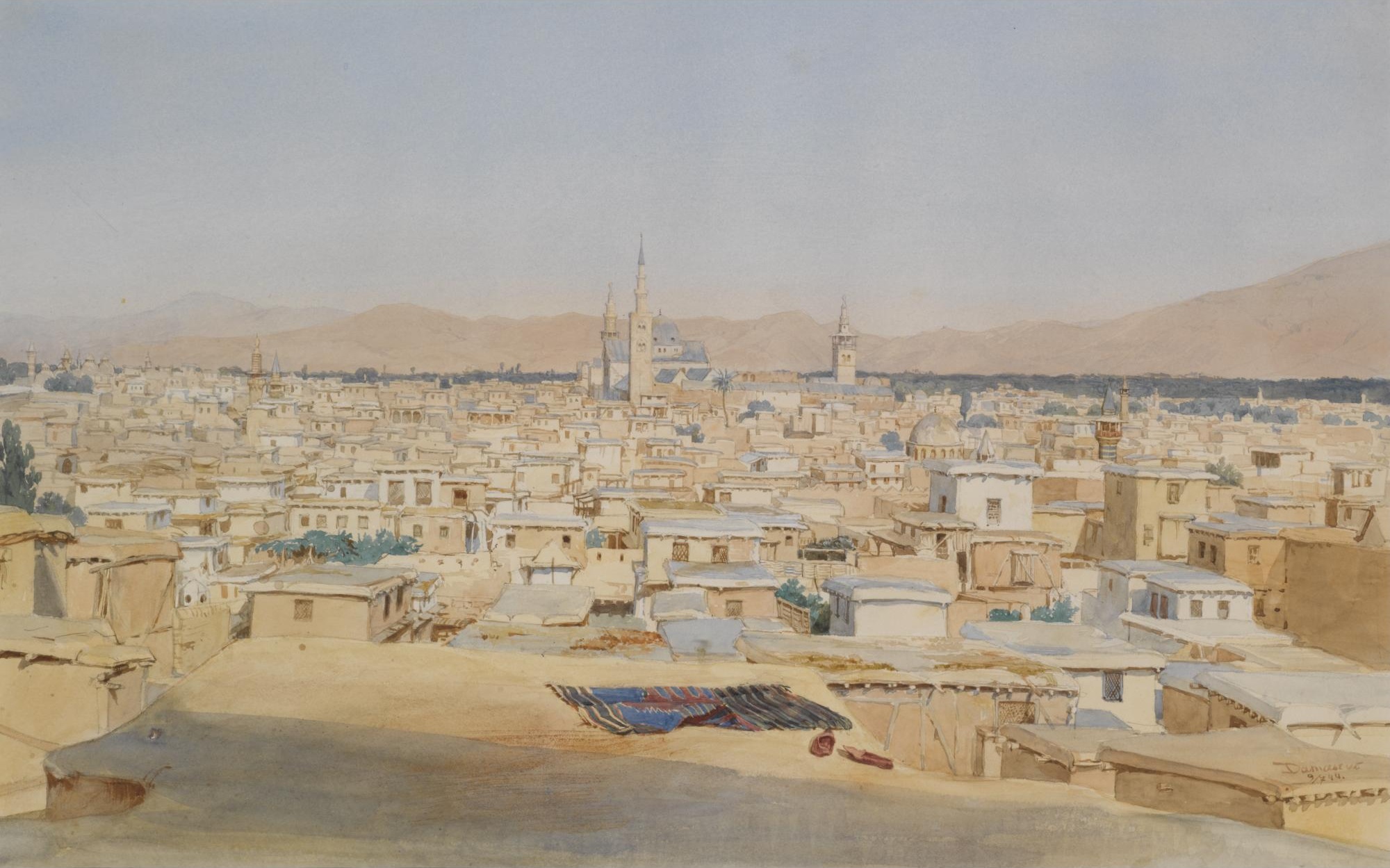|
669
__NOTOC__ Year 669 ( DCLXIX) was a common year starting on Monday of the Julian calendar. The denomination 669 for this year has been used since the early medieval period, when the Anno Domini calendar era became the prevalent method in Europe for naming years. Events By place Byzantine Empire * Spring – Arab forces that have taken Chalcedon, on the Asian shore of the Bosporus, threaten the Byzantine capital Constantinople. The Muslim-Arabs are decimated by famine and disease. Yazid, the Arab commander, retreats to the island of Cyzicus (modern Turkey). Britain * King Ecgberht of Kent loses the overlordship of Surrey to King Wulfhere of Mercia. Ecgberht then grants the old Saxon Shore Fort at Reculver (south-east England) to a priest named Bassa, in order to establish a monastery dedicated to St. Mary (approximate date). Asia * November 14 – Kamatari, Japanese statesman and reformer, receives the surname Fujiwara from Emperor Tenji as a reward for ... [...More Info...] [...Related Items...] OR: [Wikipedia] [Google] [Baidu] |
Reculver
Reculver is a village and coastal resort about east of Herne Bay on the north coast of Kent in south-east England. It is in the Wards of the United Kingdom, ward of the same name, in the City of Canterbury district of Kent. Reculver once occupied a strategic location at the north-western end of the Wantsum Channel, a sea lane that separated the Isle of Thanet and the Kent mainland until the late Middle Ages. This led the Roman Empire, Romans to build a small fort there at the time of their Roman conquest of Britain, conquest of Britain in 43 AD, and, starting late in the 2nd century, they built a larger fort, or Castra, ''castrum'', called ''Regulbium'', which later became one of the chain of Saxon Shore forts. Following the withdrawal of the Western Roman Empire in ca. early C4th, the Brythons again took control of the lands until Anglo-Saxon invasions shortly afterward. By the 7th century Reculver had become a landed estate of the Anglo-Saxon England, Anglo-Saxon Kin ... [...More Info...] [...Related Items...] OR: [Wikipedia] [Google] [Baidu] |
Pope Gregory II
Pope Gregory II (; 669 – 11 February 731) was the Pope, bishop of Rome from 19 May 715 to his death on 11 February 731.Mann, Horace. "Pope St. Gregory II." The Catholic Encyclopedia Vol. 6. New York: Robert Appleton Company, 1909. 18 September 2017 His defiance of Emperor Leo III the Isaurian as a result of the Byzantine Iconoclasm, iconoclastic controversy in the Eastern Empire prepared the way for a long series of revolts, schisms, and civil wars that eventually led to the establishment of the Temporal power of the Holy See, temporal power of the popes. Early life Born into a Patrician (ancient Rome), noble Roman family in the year 669, Gregory was the son of Marcellus and wife Honesta. Gregory II was an alleged collateral ancestor to the Roman Savelli family, according ...[...More Info...] [...Related Items...] OR: [Wikipedia] [Google] [Baidu] |
Fujiwara No Kamatari
, also known as , was a Japanese politician and aristocrat who, together with Prince Naka no Ōe (later Emperor Tenji), carried out the Taika Reform. He was the founder of the Fujiwara clan, the most powerful aristocratic family in Japan during the Nara and Heian periods. He, along with the Mononobe clan, was a supporter of Shinto and fought the introduction of Buddhism to Japan. The Soga clan, defenders of Buddhism in the Asuka period, defeated Kamatari and the Mononobe clan, and Buddhism became the dominant religion of the Imperial Court. Kamatari was appointed Inner Minister,Nussbaum, Louis-Frédéric. (2005). "Fujiwara no Tadahira" in ; Brinkley, Frank ''et al.'' (1915). and, along with Prince Naka no Ōe, later Emperor Tenji (626–672), launched the Taika Reform of 645, which centralized and strengthened the central government. Just before his death, he received the surname ''Fujiwara'' and the rank from Emperor Tenji, thus establishing the Fujiwara clan. Biography ... [...More Info...] [...Related Items...] OR: [Wikipedia] [Google] [Baidu] |
Famine
A famine is a widespread scarcity of food caused by several possible factors, including, but not limited to war, natural disasters, crop failure, widespread poverty, an Financial crisis, economic catastrophe or government policies. This phenomenon is usually accompanied or followed by regional malnutrition, starvation, epidemic, and increased death, mortality. Every inhabited continent in the world has experienced a period of famine throughout history. During the 19th and 20th centuries, Southeast Asia, Southeast and South Asia, as well as Eastern Europe, Eastern and Central Europe, suffered the greatest number of fatalities due to famine. Deaths caused by famine declined sharply beginning in the 1970s, with numbers falling further since 2000. Since 2010, Africa has been the most affected continent in the world by famine. As of 2025, Haiti and Afghanistan are the two states with the most catastrophic and widespread states of famine, followed by Palestine (confined to Gaza Strip ... [...More Info...] [...Related Items...] OR: [Wikipedia] [Google] [Baidu] |
Julian Calendar
The Julian calendar is a solar calendar of 365 days in every year with an additional leap day every fourth year (without exception). The Julian calendar is still used as a religious calendar in parts of the Eastern Orthodox Church and in parts of Oriental Orthodox Churches, Oriental Orthodoxy as well as by the Amazigh, Amazigh people (also known as the Berbers). The Julian calendar was proposed in 46 BC by (and takes its name from) Julius Caesar, as a reform of the earlier Roman calendar, which was largely a lunisolar calendar, lunisolar one. It took effect on , by his edict. Caesar's calendar became the predominant calendar in the Roman Empire and subsequently most of the Western world for more than 1,600 years, until 1582 when Pope Gregory XIII promulgated a revised calendar. Ancient Romans typically designated years by the names of ruling consuls; the ''Anno Domini'' system of numbering years was not devised until 525, and became widespread in Europe in the eighth cent ... [...More Info...] [...Related Items...] OR: [Wikipedia] [Google] [Baidu] |
England
England is a Countries of the United Kingdom, country that is part of the United Kingdom. It is located on the island of Great Britain, of which it covers about 62%, and List of islands of England, more than 100 smaller adjacent islands. It shares Anglo-Scottish border, a land border with Scotland to the north and England–Wales border, another land border with Wales to the west, and is otherwise surrounded by the North Sea to the east, the English Channel to the south, the Celtic Sea to the south-west, and the Irish Sea to the west. Continental Europe lies to the south-east, and Ireland to the west. At the 2021 United Kingdom census, 2021 census, the population was 56,490,048. London is both List of urban areas in the United Kingdom, the largest city and the Capital city, capital. The area now called England was first inhabited by modern humans during the Upper Paleolithic. It takes its name from the Angles (tribe), Angles, a Germanic peoples, Germanic tribe who settled du ... [...More Info...] [...Related Items...] OR: [Wikipedia] [Google] [Baidu] |
Emperor Tenji
, known first as and later as until his accession, was the 38th emperor of Japan who reigned from 668 to 671. He was the son of Emperor Jomei and Empress Kōgyoku (Empress Saimei), and his children included Empress Jitō, Empress Genmei, and Emperor Kōbun. In 645, Tenji and Fujiwara no Kamatari defeated Soga no Emishi and Iruka. He established a new government and carried out political reforms. He then assumed real political power as the crown prince of both the Kōtoku and Saimei Emperors. Despite the death of Emperor Saimei, he did not accede to the throne for seven years, and came to the throne after the relocation of the capital to Ōmi in 668. He created Japan's first family register, the ''Kōgo Nenjaku'', and the first code of law, the Ōmi Code. Traditional narrative He was the son of Emperor Jomei, but was preceded as ruler by his mother Empress Saimei. Prior to his accession, he was known as . Events of Tenji's life As prince, Naka no Ōe played a cru ... [...More Info...] [...Related Items...] OR: [Wikipedia] [Google] [Baidu] |
Fujiwara Clan
The was a powerful family of imperial regents in Japan, descending from the Nakatomi clan and, as legend held, through them their ancestral god Ame-no-Koyane. The Fujiwara prospered since ancient times and dominated the imperial court until the Meiji Restoration in 1868. They held the title of Ason. The abbreviated form is . The 8th century clan history states the following at the biography of the clan's patriarch, Fujiwara no Kamatari (614–669): "Kamatari, the Inner Palace Minister who was also called ‘Chūrō'',''’ was a man of the Takechi district of Yamato Province. His forebears descended from Ame no Koyane no Mikoto; for generations they had administered the rites for Heaven and Earth, harmonizing the space between men and the gods. Therefore, it was ordered their clan was to be called Ōnakatomi" The clan originated when the founder, Nakatomi no Kamatari (614–669) of the Nakatomi clan, was rewarded by Emperor Tenji with the honorific "Fujiwara"after the w ... [...More Info...] [...Related Items...] OR: [Wikipedia] [Google] [Baidu] |
Byzantine Empire
The Byzantine Empire, also known as the Eastern Roman Empire, was the continuation of the Roman Empire centred on Constantinople during late antiquity and the Middle Ages. Having survived History of the Roman Empire, the events that caused the fall of the Western Roman Empire in the 5th centuryAD, it endured until the fall of Constantinople to the Ottoman Empire in 1453. The term 'Byzantine Empire' was coined only after its demise; its citizens used the term 'Roman Empire' and called themselves 'Romans'. During the early centuries of the Roman Empire, the western provinces were Romanization (cultural), Latinised, but the eastern parts kept their Hellenistic culture. Constantine the Great, Constantine I () legalised Christianity and moved the capital to Constantinople. Theodosius I, Theodosius I () made Christianity the state religion and Greek gradually replaced Latin for official use. The empire adopted a defensive strategy and, throughout its remaining history, expe ... [...More Info...] [...Related Items...] OR: [Wikipedia] [Google] [Baidu] |
Yazid I
Yazid ibn Mu'awiya ibn Abi Sufyan (; 11 November 683), commonly known as Yazid I, was the second caliph of the Umayyad Caliphate, ruling from April 680 until his death in November 683. His appointment by his father Mu'awiya I () was the first hereditary succession to the caliphate in Islamic history. His caliphate was marked by the death of Muhammad's grandson Husayn ibn Ali and the start of the crisis known as the Second Fitna. During his father's caliphate, Yazid led several campaigns against the Byzantine Empire, including an attack on the Byzantine capital, Constantinople. Yazid's nomination as heir apparent in (56 AH) by Mu'awiya was opposed by several Muslim grandees from the Hejaz region, including Husayn and Abd Allah ibn al-Zubayr. The two men refused to recognize Yazid following his accession and took sanctuary in Mecca. When Husayn left for Kufa in Iraq to lead a revolt against Yazid, he was killed with his small band of supporters by Yazid's forces in the Batt ... [...More Info...] [...Related Items...] OR: [Wikipedia] [Google] [Baidu] |
Wulfhere Of Mercia
Wulfhere or Wulfar (died 675) was King of Mercia from 658 until 675 AD. He was the first Christian king of all of Mercia, though it is not known when or how he converted from Anglo-Saxon paganism. His accession marked the end of Oswiu of Northumbria's overlordship of southern England, and Wulfhere extended his influence over much of that region. His campaigns against the West Saxons led to Mercian Supremacy, Mercian control of much of the Thames valley. He conquered the Isle of Wight and the River Meon, Meon valley and gave them to King Æthelwealh of Sussex, Æthelwealh of the South Saxons. He also had influence in Surrey, Kingdom of Essex, Essex, and Kingdom of Kent, Kent. He married Ermenilda of Ely, Eormenhild, the daughter of King Eorcenberht of Kent. Wulfhere's father, Penda of Mercia, Penda, was killed in 655 at the Battle of Winwaed, fighting against Oswiu of Northumbria. Penda's son Peada of Mercia, Peada became king under Oswiu's overlordship but was murdered six mont ... [...More Info...] [...Related Items...] OR: [Wikipedia] [Google] [Baidu] |
Mary (mother Of Jesus)
Mary was a first-century Jewish woman of Nazareth, the wife of Joseph and the mother of Jesus. She is an important figure of Christianity, venerated under various titles such as virgin or queen, many of them mentioned in the Litany of Loreto. The Eastern and Oriental Orthodox, Catholic, Anglican, Methodist, Reformed, Baptist, and Lutheran churches believe that Mary, as mother of Jesus, is the Mother of God. The Church of the East historically regarded her as Christotokos, a term still used in Assyrian Church of the East liturgy. Other Protestant views on Mary vary, with some holding her to have lesser status. She has the highest position in Islam among all women and is mentioned numerous times in the Quran, including in a chapter named after her.Jestice, Phyllis G. ''Holy people of the world: a cross-cultural encyclopedia, Volume 3''. 2004, , p558 Sayyidana Maryam . She is also revered in the Baháʼí Faith and the Druze Faith. The synoptic Gospels name Mary as the ... [...More Info...] [...Related Items...] OR: [Wikipedia] [Google] [Baidu] |
